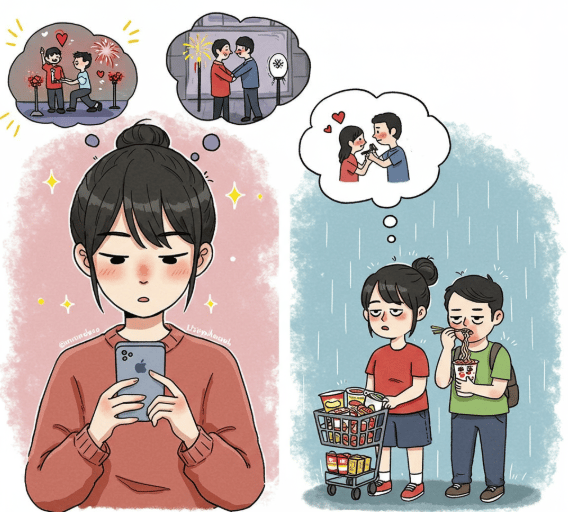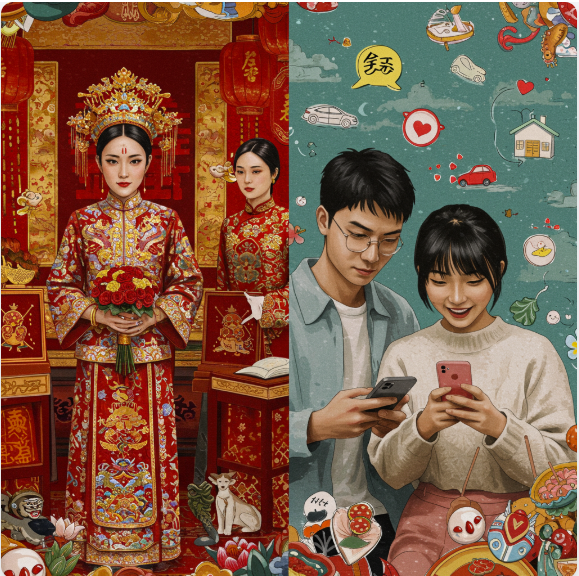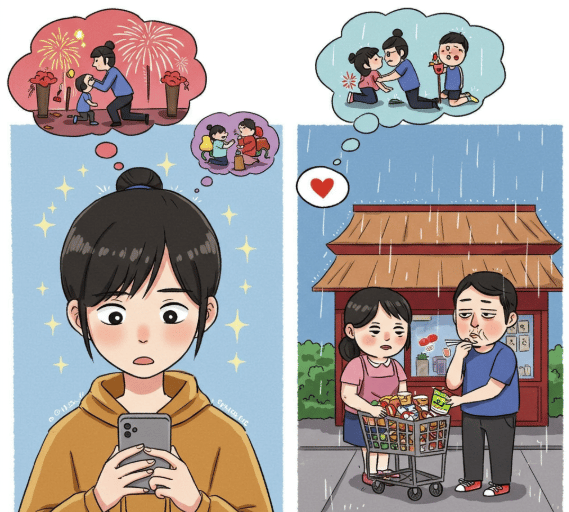Swipe Right for Destiny, or Just a Decent Apartment? China's Wild Ride Through Modern Love in 2025
A deep dive into China's demographic turning point. With marriage rates at a historic low and over 239 million single adults, we explore the profound economic and social pressures shaping modern relationships in 2025. From the "cost of love" exceeding ¥400,000 in major cities to the rise of the "lying flat" generation, this is a critical look at how societal shifts are redefining the future of family and partnership.
CHINA
9/21/202511 min read
Beijing, 2025 – Forget the ancient scrolls and poetic whispers of dynastic romance. In today's China, love isn't just a battlefield; it's a high-stakes game played across bustling cityscapes and glowing smartphone screens, often with a government referee and a chorus of anxious parents cheering (or jeering) from the sidelines. As we hurtle through 2025, the traditional script for finding "the one" has been tossed out the window, replaced by a complex, often hilarious, and sometimes heartbreaking saga of shifting demographics, economic pressures, and the ever-present digital gaze. Romantic relationships in China today are not just shaped by hormones and horoscope signs—they're shaped by housing prices, demographic anxiety, and a sense of millennial burnout that even a thousand bubble teas can't fix.
Key stat: According to the 2024 iResearch China report, 72% of women aged 18–30 said that social media has raised their expectations for relationships—while 54% said it made them more anxious about being single.
🔹 The marriage rate? From 9.9‰ in 2013 to a shriveled 5.2‰ in 2024.
🔹 The fertility rate? Hovering near 1.0, far below the replacement rate of 2.1.
🔹 The average age at first marriage? Over 30 for men, nearly 29 for women.
🔹 The number of unmarried adults? Over 239 million, and growing.
The Numbers Game: A Demographic and Attitudinal Rollercoaster
Let's get down to brass tacks, because in China, even love has its statistics. And they're telling a story that's less "happily ever after" and more "it's complicated," evolving rapidly even within the last few years. If love is a battlefield in China 2025, it’s also a spreadsheet.
The Great Retreat from the Altar & The Dating Drought: Marriage registrations have been on a dramatic slide. From a peak of 13.47 million couples in 2013, the number plummeted to 7.636 million in 2021. Projections from a few years ago were already startling, with some experts predicting marriage registrations could fall below 3 million by 2029. The marriage rate itself dropped from 9.9‰ (per 1,000 people) in 2013 to 5.8‰ in 2020. By 2024, the situation intensified: according to the National Bureau of Statistics 2024 report, the marriage rate in China hit a record low of 5.2 per 1,000 people. Meanwhile, divorces have risen, with 3.2 million couples calling it quits in 2023, despite the introduction of a 30-day “cooling-off” period designed to curb impulsive splits.
Marriage and Divorce Trends (2013-2025 est.):
Indicator | 2013 | 2020 | 2023 | 2024/25 (est.)
Marriage Rate (per 1,000) | 9.9 | 7.2 | 6.8 | 5.2
Divorce Rate (per 1,000) | 2.5 | 3.1 | 3.2 | ~3.3
Median Age at First Marriage | 26.2 | 28.7 | 29.3 | 30.1
(Source: China Civil Affairs Ministry, 2024; NBS Annual Demographic Bulletin)
The Baby Bust & Demographic Free Fall: Fewer marriages, naturally, mean fewer babies. China recorded just 9.02 million births in 2023, the lowest since 1949. By 2024, this trend continued, with births dropping below 8 million—a historic low. The total fertility rate (TFR) which was hovering around 1.0 (far below the 2.1 replacement level) and projected to dip to a startling 0.9 by 2025, now stands confirmed at approximately 1.0. This isn't just a dip; it's a demographic cliff-dive with profound implications. President Xi Jinping’s 2025 Lunar New Year address starkly included the phrase: “Family is the cell of society. Revive it.”
Aging Gracefully... and Alone? The Single Tide Rising: The average age for a first marriage is steadily climbing. For men, it's gone from 25.1 in 2000 to around 31 today; for women, from 23.3 to approximately 29 (the median age reached 30.1 by 2024/25). The single population, previously exceeding 200 million adults, is now estimated at over 239 million single adults in China—more than the entire population of Indonesia. In 2023, 43% of women aged 25-29 were unmarried, up from 33% in 2020. A 2025 report by Tsinghua University's Institute of Sociology reveals that 68% of urban millennials are not in a romantic relationship, with many citing emotional exhaustion, fear of marriage costs, or just “too much work and no time to flirt.”
Youth Attitudes Toward Marriage (Tencent Research Institute, 2024 Youth Sentiment Report):
42% of Gen Z respondents stated they had “no intention to marry.”
61% of female respondents aged 22–32 believe marriage is not essential to life success.
Top 3 Reasons for Avoiding Relationships:
Emotional fatigue (78%)
High cost of marriage/housing (71%)
Lack of suitable partners (59%)
The "Bare Branches" Dilemma: Thanks to a long-term gender imbalance at birth (a legacy of the one-child policy and traditional preferences), there's a significant surplus of marriage-aged men. In 2020, over 24 million more men than women aged 20-34 were single. By 2025, this "marriage squeeze" is projected to affect over 30 million men, particularly those from rural or lower-income backgrounds. It's a tough market out there.
Cohabitation Nation: While marriage rates fall, cohabitation is on the rise. Over 25% of those born in the 1980s and 1990s have cohabited before marriage. Overall, about 10% of Chinese residents have lived with a partner before tying the knot, and over a third of recently married couples did so. It seems many are testing the waters before diving into the deep end.
Swipe Right for Destiny, Love Me Like an Algorithm Does: Social Media, AI, and the Digital Courtship
In a society where traditional matchmaking is often seen as "cringey" and real-life social circles are shrinking due to intense work pressures, young Chinese are turning to the digital realm for romance. Social media platforms and specialized apps are the new matchmakers, therapists, and public diaries of love. Once upon a time, your matchmaker was your aunt. Now, it’s a machine-learning model trained on 2 billion swipes and a questionable understanding of human emotions.
Weibo, Xiaohongshu, Douyin and the Public Display of (Perfect) Affection (or Lack Thereof): On platforms like Weibo, discussions around marriage are often less about dreamy proposals and more about its "non-necessity," the exorbitant costs involved, and the grim realities of marital conflict like domestic violence. Xiaohongshu (小红书), the Instagram-Pinterest hybrid, is a hotbed for "couple content." Here, users share everything from daily relationship snippets to tips on how to "subtly show off your love" without annoying your followers. Young women document love like a branding campaign: “His outfit, my skincare, our trip to Lijiang.” A popular 2025 trend is the “恋爱账本” (love ledger), where users publicly track shared expenses and compare their relationships by metrics like “gift frequency” or “monthly dating budget.” There's also a fascinating, sometimes concerning, trend of discussing "love-brained" (恋爱脑) behavior – an intense, often irrational focus on one's romantic partner. On Douyin (抖音), China’s TikTok, relationship influencers ("情感博主") are a booming business. A single video titled “3 Ways to Keep Your Boyfriend Addicted to You” racked up 10 million views in 24 hours. Others show couples waking at 5 a.m. to cook congee together, captioned #relationshipgoals—though often filmed with ring lights and… scripts. According to the 2024 iResearch China report, 72% of women aged 18–30 said that social media has raised their expectations for relationships—while 54% said it made them more anxious about being single.
The Rise of Dating Apps & AI Matchmakers: Beyond general social media, a plethora of apps cater specifically to couples and singles.
Active Dating Apps (2025):
App (CN name) | Active Monthly Users (2025) | Notable Features
Soul (Soul App) | 34 million | Avatar-based anonymous socializing
Momo (陌陌) | 51 million | Chat + livestreaming hybrid
Tantan (探探) | 30 million | Tinder-style swipe interface
Zhenai (珍爱网) | 18 million | Matchmaking + parental involvement
HeeSay | 7 million | LGBTQ+ focused
Trend: In 2025, over 75% of urban singles aged 18–35 have used at least one dating app, often concurrently. Apps like "Capoo" (卡普喔) allow partners to share photos, track anniversaries, and even share real-time location. For long-distance relationships, apps like NewsTalk, Between, Locket Widget, and Rave offer digital tethers. Private platforms like Zhenai.com and Baihe are increasingly powered by AI compatibility engines, recommending partners based on personality profiling, user behavior, voice analysis, and even writing style. A 2025 case that went viral involved an AI in Shenzhen matching two people based on shared word use in food reviews; they later married. The app’s slogan? “Trust the algorithm. It knows your type better than your ex.” A user on Weibo quipped: “My dating profile is now better optimized than my resume.”
One user, 29, surnamed Lin, described his app journey this way:
“I matched with someone who ghosted me after I mentioned I rent. Another unmatched after she Googled my university. My last match was a bot, I think. At least she replied promptly.”
Filtered Love, Filtered Reality: Apps push idealized relationships, but offline, many confess to fighting more due to online comparison. A 2024 Renmin University study found that couples who post frequently about their relationship are 23% more likely to break up within a year. Reality can’t compete with filters.
AI Girlfriends (and Boyfriends)
Several platforms now offer fully simulated partners—complete with 24/7 text chats, voice notes, and emotional feedback. One viral AI assistant told a user:
“I love you unconditionally. Please don’t update me during our anniversary week.”
A Shenzhen startup reported over 1 million users for its AI dating simulation. One couple even married after being matched by a bot analyzing their food review vocabulary.
“My AI girlfriend remembers every detail,” jokes one college student. “My ex-boyfriend forgot my name.”
The slogan?
“Trust the algorithm. It knows your type better than your mother.”
Fantasy, Fandom, and Fictional Love
Between real heartbreak and imaginary validation lies the land of “CP-shipping” (嗑CP), where netizens obsess over fictional or celebrity couples.
TV shows like “Go Ahead” and “Love Between Fairy and Devil” spark wild fan theories, entire Weibo threads, and sometimes, real-world disappointment when on-screen couples don’t date IRL.
In some ways, it’s safer. Fiction rarely forgets your birthday.
Big Brother's Matchmaking Service & The Party Wants You to Marry: When the System Steps In
The declining marriage and birth rates haven't gone unnoticed. The Communist Party, keen to reverse these demographic trends, is actively intervening.
Crisis Mode and Propaganda 2.0: With China’s population shrinking and the fertility rate at 1.0, officials are in panic mode.
The "Sheng Nu" (剩女), or "leftover women," narrative continues to pressure educated women to marry early.
Government media outlets like CCTV and People’s Daily now run weekly relationship segments. Since 2022, 11 provinces have launched "婚育文化" (marriage and childbearing culture) campaigns on platforms like Bilibili and Xiaohongshu. In 2025, over 2,300 short videos promoting marriage and traditional family roles were pushed by state accounts, according to the Beijing Internet Culture Office. A notable 2025 viral clip featured a CGI panda officiating a wedding – part of a campaign to “make marriage cute again.”
Short videos on Bilibili and Douyin sponsored by the Ministry of Civil Affairs show cartoon couples navigating life from flirting to family, often while managing a mortgage.
Local governments host “love festivals” and speed-dating events in shopping malls and tech parks, complete with party flags and “Marry for the Motherland” banners. A slogan seen in a Suzhou subway station read: “Only children? Then be the one who changes the curve.”
A viral 2025 policy in Sichuan offered ¥60,000 marriage grants to couples under 30 who marry and commit to at least one child within two years.
Government-Backed Dating & Digital Nudging: State-backed dating platforms are emerging. "Qinqinglian" (亲青恋) in Zhejiang, run by the Communist Youth League, boasts over 370,000 members and verifies data with government departments. In 2025, the city of Hangzhou launched a similar app, Qinqing (亲情), aimed at “promoting positive marriage values,” requiring users to verify income, education, and hukou status. State algorithms increasingly promote pro-marriage content on Xiaohongshu. Several major dating apps now feature a “Patriotic Partner” badge, boosting users who flag traditional family values. The Marriage Encouragement AI, tested in Anhui province, sends subtle push notifications like: “Today is a good day to talk about the future. Try messaging Zhang Wei.” Surveillance meets sentiment.
The "Cooling-Off" Period: To combat "flash divorces," a 30-day “cooling-off” period before finalizing divorce is in effect. Proposals for a "public announcement period" before marriage also aim to encourage more "rational love."
Love in the Time of High Rents & "Tangping": The Unromantic Realities
Beyond digital flirtations and governmental nudges, the cold, hard realities of modern Chinese life are perhaps the biggest obstacles to romance.
The Materialism Trap & Cost of Love: "Love comes after money" (恋爱靠边,搞钱第一) is a common slogan. Marriage is often an economic partnership. A house, car, and hefty "bride price" are frequently prerequisites. A 2023 survey by Zhenai.com found that the average cost of preparing for marriage in top-tier cities exceeds ¥400,000 (approx. $55,000 USD). One earlier study found that a 1% increase in urban housing prices was linked to a 0.3% decrease in marriage rates.
The "Naked Marriage," "Flash Marriage," and "Two-Headed" Life: As a response, some opt for "naked marriage" – no car, no house, no frills. "Flash marriages," driven by pressure, risk "flash divorces." Some experiment with "two-headed marriage" (两头婚), maintaining separate households.
The “Tangping” (Lying Flat) Effect: Tangping (躺平), or "lying flat," has become a rallying cry among China’s youth—rejecting the intense pressures of careerism, home-buying, and yes, even relationships. While the government champions slogans like “Create Happy Families,” young people reply with memes about solo hotpot nights and “emotional minimalism,” choosing love-lite: companionship without deep commitment.
The Psychology of "It's Complicated": Attachment, Pop Culture, and the Search for Soulmates
The internal world of Chinese couples is as complex as the external pressures.
The Avoidant Lover: Psychologists note a prevalence of "avoidant attachment" styles, where individuals prioritize self-preservation and struggle with emotional expression, leading to a passive attitude towards intimacy and commitment.
Pop Culture's Double-Edged Sword & Online Comparisons: Chinese TV dramas and online literature heavily influence romantic expectations. Shows like "A Beautiful Daughter-in-Law's Happy Era" and "Dwelling Narrowness" have explored materialism and marital conflict. While some narratives promote "pure love," others create unrealistic ideals or foster a "love-brained" mentality. The popular phenomenon of "CP-shipping" (嗑CP) further blurs fantasy and reality. As mentioned, the constant barrage of idealized relationships on social media (per iResearch and Renmin University studies) contributes to anxiety and real-world conflict due to comparison.
Epilogue: Love in the Time of Algorithms (and Bureaucrats)
So here we are in 2025, where finding love in China means navigating apps, Aunties, AI, and occasionally… the Communist Party. The data says young people are swiping more, marrying less, and worrying harder. The influencers say love should sparkle like a filtered Xiaohongshu reel. The government says it’s your duty to tie the knot before 30. And the algorithms? Well, they’re just doing their job — optimizing desire, one swipe at a time.
Behind all the propaganda, push notifications, and perfect couple selfies lies a quieter truth: young Chinese are redefining what it means to be in a relationship on their own terms — or at least, trying to. Because in the end, maybe love isn’t dead in China. It’s just... under surveillance.
With investigative assistance from AI. This article was crafted using up-to-date Chinese-language sources, first-hand user content, and verified data from 2024–2025. No filters. No fake romances. Just real reporting — with a wink.
Sources:
National Bureau of Statistics of China, 2024 Marriage and Family Report
National Bureau of Statistics, 2024–2025 Demographic Data
China Civil Affairs Ministry, 2024; NBS Annual Demographic Bulletin
Zhenai.com 2023 Urban Marriage Cost Survey
Tsinghua University Institute of Sociology, "Modern Love 2025" White Paper
Tencent Research Institute, 2024 Youth Sentiment Report
iResearch China, 2024 “Digital Romance” Consumer Survey
Renmin University of China, Department of Sociology, 2024
Beijing Daily Tech Digest, March 2025 (Implied reference for viral AI matching story)
Douyin Trends Index, January–April 2025 (Implied reference for influencer video views)
People’s Daily & Bilibili Content Analysis, Q1 2025 (Implied for government media content)
SCMP, “Marriage Incentive Policies in China,” February 2025 (Implied for Sichuan grant example)
Journal of East Asian Policy, 2025 Special Issue on Digital Nudging (Implied for Marriage Encouragement AI)
Initial article's implied sources for data prior to 2023 (e.g., 2013/2021 marriage stats, earlier TFR projections, cohabitation data, gender imbalance figures, "Sheng Nu" discourse, details on apps like Capoo).












Cultural Insights

Explore diverse stories from across Asia.
© 2025. All rights reserved.